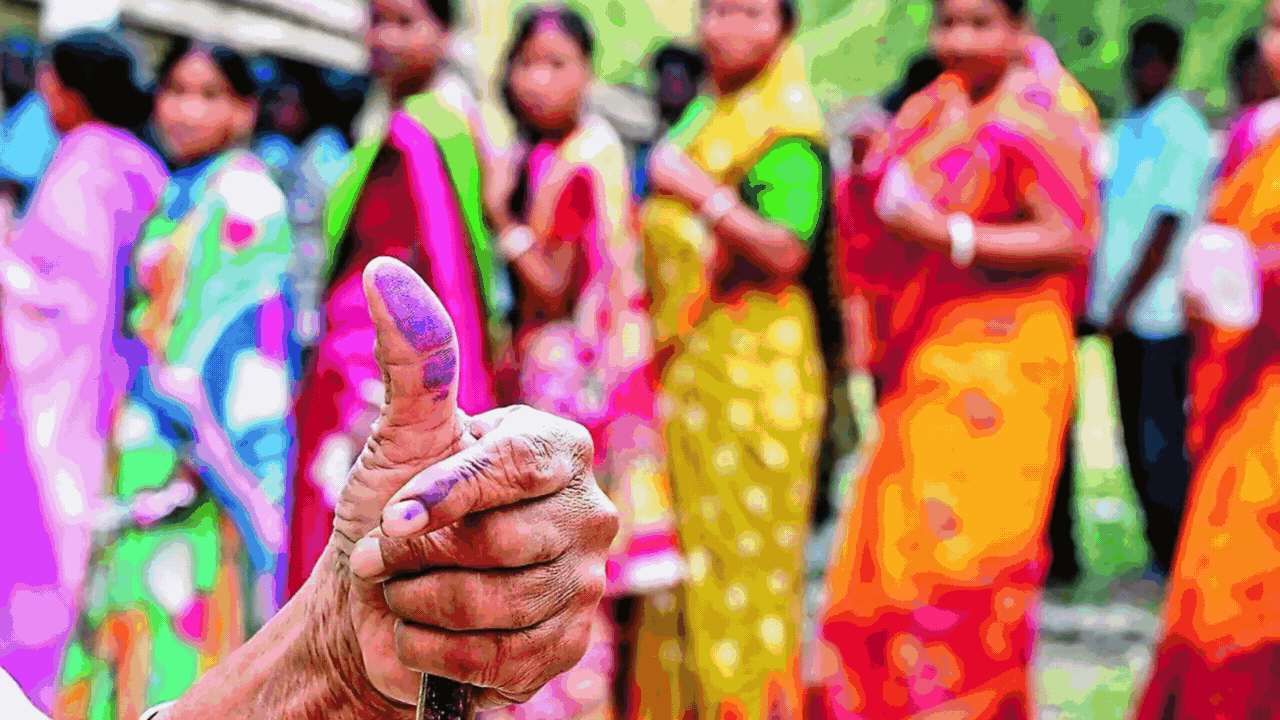Finger in every pie? ‘Double voters’ press button where they are and ‘back home’

Shanti keeps her hair well-oiled every election, preparing for a “picnic” – voting at home in Mumbai’s Panvel as well as her native village in Maharashtra. She isn’t alone. Countless others across the country are taking the one-person one-vote principle for a ride in a seamy sideshow of the great Indian festival of democracy.
With large numbers of migrants, floating populations and many voter IDs not linked to Aadhaar yet, double voting is more common than many would like to believe, and most officials are in denial or profess ignorance.
“We were advised to oil our hair. Just before my turn (to vote), I was asked to ensure my index finger is oily by rubbing it against my hair. As soon as the ink was applied, I rubbed my finger back again in my oily hair and most of the ink was gone,” Shanti said, recalling how she and many others in Mumbai from their Raireshwar village pull off the double act. Raireshwar is a few hours’ drive from Panvel and “the journey together to vote is like a picnic”, she adds.
Ahmedabad’s Neeraj offers a peek into another “ride”. The 28-year-old vegetable vendor was among many herded into a bus arranged by a major political party and taken to vote in their native Rajasthan on April 24, two days before polling day.
Neeraj voted again May 7, in Ahmedabad-West. “I have two voter IDs. I went to Rajasthan to vote with my family in Sirohi last month,” Neeraj said, holding back his full name.
‘Only Aadhaar linking can stop double voting’
Satish Patel didn’t bother with any hide and seek, posting pictures of himself with ink-stained forefingers on both hands to claim he had voted twice “legally” in Gujarat’s Navsari Lok Sabha seat. Patel, a former councillor of Congress, joined BJP in March this year.
In Neeraj’s case, Gujarat chief electoral officer P Bharathi insisted voting twice was illegal but said she would need to verify Neeraj’s case. “We have not come across any complaints of people voting in Gujarat and also in their native places,” Bharathi said.
On Patel’s claim, the Navsari collector dismissed it as fake and said he had cast the ballot the second time as an “assistant voter” for his disabled daughter.
In Maharashtra’s Chandrapur, at least 50% of the residents of 14 villages straddling the Telangana border cast votes in neighbouring Adilabad on May 13. Flaunting dual voter ID cards, they did not miss voting in Chandrapur either, during the first phase on April 19. Villagers said the Adilabad administration had set up six booths in these 14 Maharashtra villages. As per Maharashtra govt records, there are 5,117 voters in these villages.
Adilabad collector Rajarshi Shah told TOI he was “busy with elections and will look into the issue after he gets free”, without refuting the dual voting trend.
His counterpart in Chandrapur, Vinay Gowda, who had earlier called it a criminal offence, refused to answer TOI’s calls and text messages.
The northeast is not an outlier in this practice. The village of Ranibari, in the foothills of Meghalaya, is “part of both Guwahati and Shillong LS constituencies”. Living along the disputed Assam-Meghalaya border areas, these “dual voters” have been exercising their franchise in Assam for decades, even after creation of Meghalaya in 1972.
Despite Meghalaya officials’ stance against double voting, residents with valid identification proof from both states continue to participate in elections in both states. Officials struggle to check it. This time, many of the hamlet’s nearly 200-odd people voted on May 7 in the Guwahati LS seat, after having done so for the Shillong LS seat on April 19.
“With poll officers from both Assam and Meghalaya approaching us, we got voter IDs made. When the authorities from both sides want us to vote, can we sit idle at home on election day?” says Pranab Rangsha, (56), headman of Ranibari village.
Candidates with less than 30% vote share have won elections. That’s changed now
Manash Jyoti Bora, an election officer in Assam’s Kamrup, believes only the completion of Aadhaar-voter ID linking will check “dual voters” while pointing out that only over 50% of voters have completed such coupling. Meghalaya chief electoral officer BDR Tiwari said he was “unaware of villagers possessing two voter IDs cards” or voting twice.
(With inputs from Hemali Chhapia in Mumbai, Vaibhav Ganjapure and Mazhar Ali in Nagpur, Paul John and Meghdoot Sharon in Ahmedabad, Kangkan Kalita in Guwahati)
